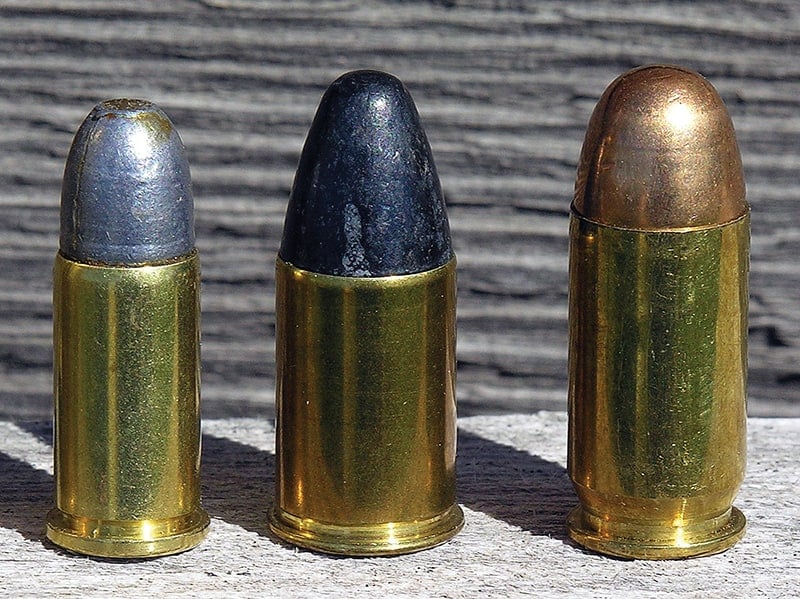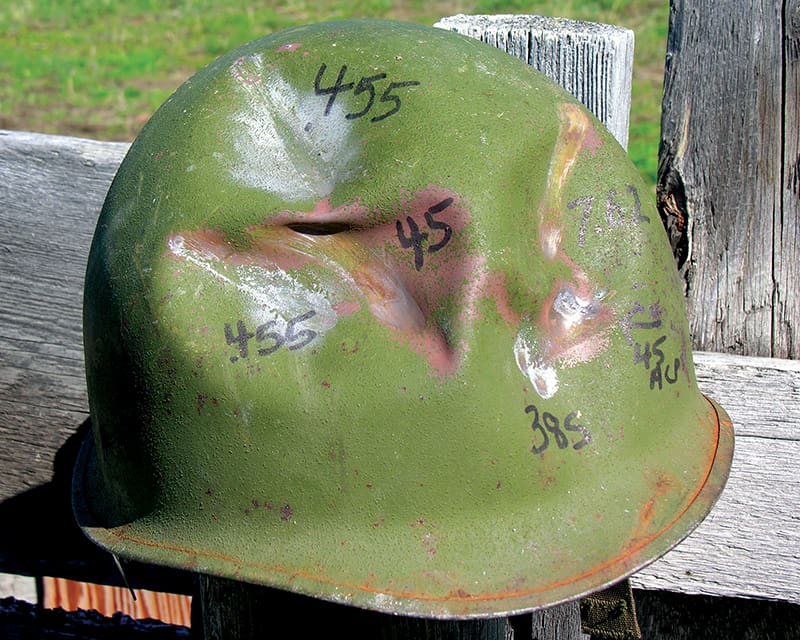WWII British Sixguns
The British have never been ones to march in lockstep with the rest of the world, and a little evidence of that is their choice of handguns in World War II. While most of the world’s major military forces had by that time converted to one sort or another of autoloader, the British decided to stick with revolvers.
Mostly they used four types of double action revolver, although in 1940 the British government even bought some Colt Single Action Army revolvers to help arm their home guard. (Today collectors refer to those as “Battle of Britain” guns.) Issued to regular British forces, however, were their domesticly manufactured Enfield No. 2 .38 and Webley Mark VI .455. The Webley Mark VI .455 had been adopted in 1916, and although it had been officially replaced about 1928 by the Enfield No. 2 .38, it was still in common use.
Not having enough of either Webley or Enfield to go around, they also bought many thousands of S&W K-frame Military & Police revolvers chambered for the .38 S&W cartridge. And furthermore, they still had and consequently used many S&W N-frame (Hand Ejector 2nd Models) which they had purchased from 1915 to1917 for World War I.
Their choice of cartridges for these revolvers also seems strange. The .455 Webley had been with them since the 1870s as a black powder cartridge, but their Mark II version of it introduced about 1897 was loaded with smokeless propellant. By American standards, it would be considered “barely loaded.” That’s because it was rated with 265 gr. bullet at only about 600 fps. In the 1920s the British military determined a .38 caliber 200 grain bullet at about 630 fps gave about the same muzzle energy, and that’s what they converted to. Actually the case they chose to use was a twin to the .38 S&W round. That company had been chambering guns for it since the early 1870s, so when the Brits needed S&W to help them out with revolvers in the 1940s.
I’ve been told by a knowledgeable shooter/collector that prior to WWII the Brits had to reduce bullet weight on their .38s to 178 grains in order to make them full metal jacketed. Otherwise they would have been in violation to the Geneva Convention.
No Common Sense
For some strange reason, probably related to my lack of common sense, my gun trading forays these last few years have netted me samples of the four above mentioned British military revolvers. Two have some minor noteworthiness. The Enfield No. 2 .38 is marked “RAF” (Royal Air Force) and “1936,” while the S&W .455 factory letters to the Canadian government in 1916. I was even able to find a 12-round box of FMJ .455 military loads of Canadian manufacture dated 1943 to go with it. British military .38 loads have evaded me completely. For shooting I bought some of the Fiocchi .455 Webley factory loads with a 262-gr. lead bullet and handloaded some Lyman #358430 cast bullets weighing 190 gr. in the .38. Powder charge was only 2.2 grains of Bullseye. The Fiocchi .455s chronographed at 619 fps, and my .38 handloads were 10 fps faster.
So did I “test-fire” these revolvers for accuracy as any self-respecting gun’riter would do? No way. What I did was spent nine bucks at an Army surplus store for an old GI issue steel helmet. Then I set it on a fence post and fired my British WWII revolvers at it from 10 paces. The .38s wouldn’t have even given its wearer a headache. They didn’t dent it and hardly made it wobble. The .455s did dent it and it wobbled some. Admittedly these were lead bullets and not military FMJs, which might have given more penetration. For comparison, I fired a 230 grain FMJ .45 ACP factory load from a Colt 1917 revolver. It didn’t penetrate either but caved in the side of the helmet, and not only knocked it off the fence post but rolled it 20 yards down the road!
Somebody probably knows why the Brits stuck to revolvers in the years leading up to WWII, and even perhaps why they liked such pee-dunkler cartridges — I don’t. But they’re still interesting handguns, albeit only minor historical footnotes to WWII.

Get More Revolver Content Every Week!
Sign up for the Wheelgun Wednesday newsletter here:









